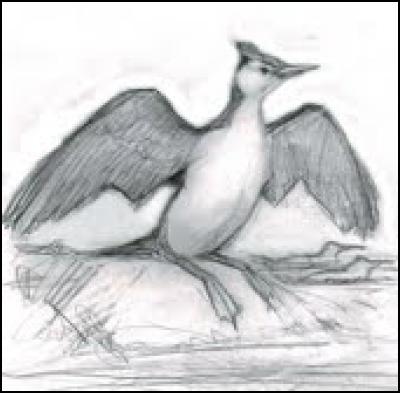One of the world’s oldest flying seabird fossils discovered
One of the world’s oldest flying seabird fossils discovered in North Canterbury

Scientists from New Zealand’s Canterbury Museum and the Senckenberg Research Institute and Natural History Museum in Frankfurt Germany, announced today the discovery of one of the world’s oldest flying seabirds.
The bones of this new species were found in the Waipara greensand deposits of North Canterbury on New Zealand’s South Island. These fossil deposits are of Paleocene age (about 58 million years old) and were formed in the deep waters of a very warm sea off the coast of Zealandia (the continental fragment that New Zealand rests upon), shortly after the event that caused the mass extinction of the dinosaurs and many marine organisms.
The species has been named Australornis lovei after its discoverer Mr Leigh Love, an amateur fossil collector from Waipara (a transliteration of the Latin scientific name is Love’s Southern Bird). The fossil comes from the same deposits as the world’s oldest Penguin Waimanu and is thought to be approximately 58 million years old.
Australornis appears to be most similar to two species described from the late Cretaceous (c. 70 million years before present) of the Antarctic Peninsula and highlights the links between Antarctica and New Zealand in the late Cretaceous and early Paleocene.
“This new species is important in our understanding of bird evolution because although there are a number of bird groups described from the late Cretaceous, most belong to groups not present on earth today,” says Dr Paul Scofield of Canterbury Museum.
Dr Gerald Mayr of the Senckenberg Research Institute and Natural History Museum says the find is exciting. “We hope to find more material of this pivotal species to enable a better understanding of its relationships and too allow us to better understand early avian evolution.”
Funding for this research comes from the R.S. Allan Memorial fund.
ends


 Natural Hazards Commission: Hub Launched To Empower Architects And Engineers To Build Above Code
Natural Hazards Commission: Hub Launched To Empower Architects And Engineers To Build Above Code Harmony Energy: Ceremony Heralds Start Of Construction On New Zealand’s Largest Solar Farm Project
Harmony Energy: Ceremony Heralds Start Of Construction On New Zealand’s Largest Solar Farm Project Stats NZ: Annual Number Of Home Consents Down 7.4 Percent
Stats NZ: Annual Number Of Home Consents Down 7.4 Percent Plains Media: Plains FM Announces Name Change After 37 Years
Plains Media: Plains FM Announces Name Change After 37 Years NIWA: Flooding From Underneath - New Tool Reveals Shallow Groundwater Elevations
NIWA: Flooding From Underneath - New Tool Reveals Shallow Groundwater Elevations Commerce Commission: Commission Concludes Auckland Airport Over-charging By $190 Million
Commerce Commission: Commission Concludes Auckland Airport Over-charging By $190 Million



